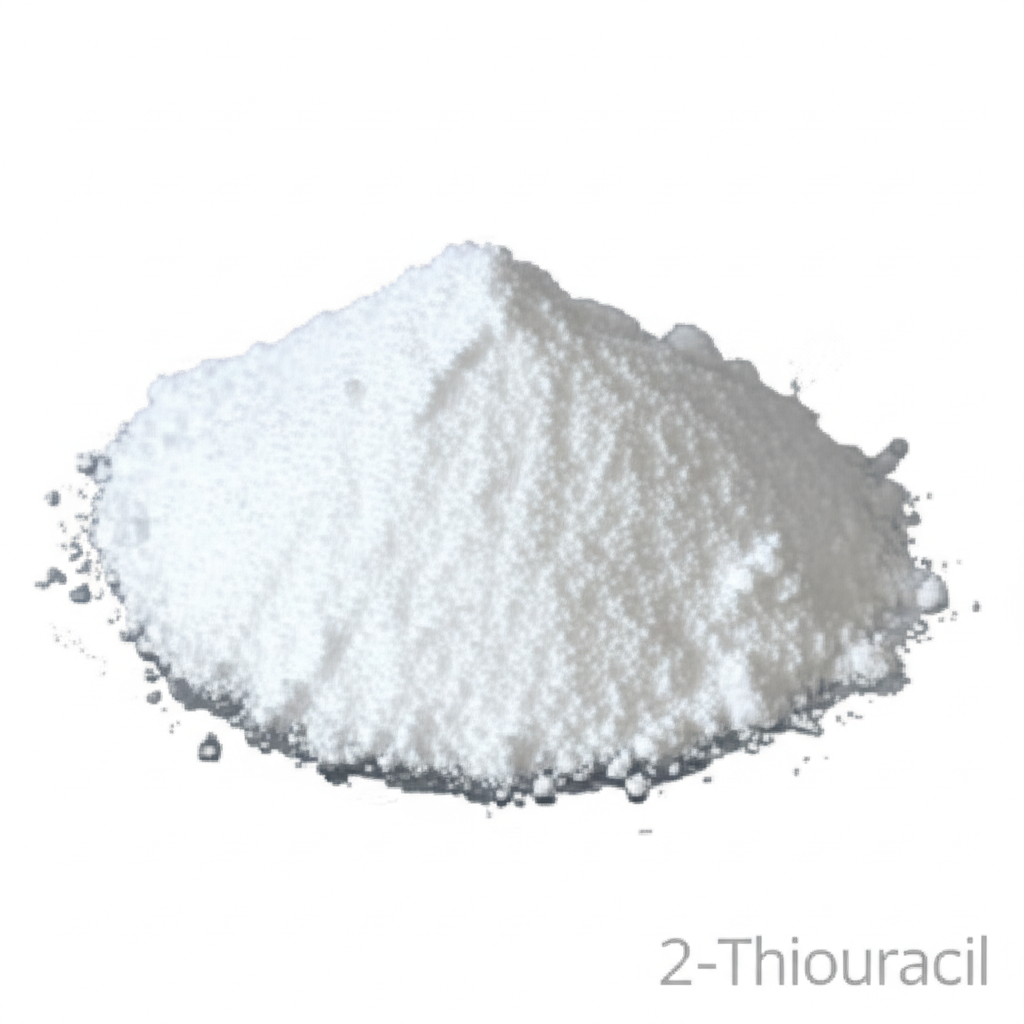2-Thiouracil: A Key Pharmaceutical Intermediate
Discover the essential properties, diverse applications, and critical safety guidelines for 2-Thiouracil (CAS 141-90-2).
Get a Quote & SampleProduct Core Value

2-Thiouracil
2-Thiouracil is a vital heterocyclic compound, widely recognized for its critical role as a pharmaceutical intermediate. Its unique chemical structure, featuring a sulfur atom at the 2-position of the uracil base, confers distinct properties essential for various syntheses and research applications.
- Leveraging 2-Thiouracil as a pharmaceutical intermediate is key for developing novel therapeutic agents, especially in endocrinology.
- Understanding the biochemical research applications of 2-Thiouracil, particularly its function as a sulfur donor, is crucial for advancing studies in protein structure and function.
- Adhering to 2-Thiouracil safety precautions, including proper handling and disposal, is paramount due to its hazardous classification.
- The CAS 141-90-2 designation ensures the correct identification of 2-Thiouracil for procurement and regulatory compliance in scientific and industrial settings.
Key Advantages of 2-Thiouracil
Antithyroid Efficacy
The primary advantage of 2-Thiouracil lies in its established efficacy as an antithyroid agent, inhibiting thyroid hormone synthesis. This makes it historically significant in the treatment of hyperthyroidism, a key area within endocrinology.
Versatile Sulfur Donor
In biochemical research, 2-Thiouracil serves as a valuable sulfur donor, facilitating the study of biological processes and protein functions, which aids in molecular biology research.
Material Science Applications
As a ligand in coordination chemistry, 2-Thiouracil forms complexes with transition metal ions, leading to materials with unique magnetic and optical properties, thus enabling advancements in sensor and catalyst development.
Key Applications
Pharmaceutical Synthesis
As a critical pharmaceutical intermediate, 2-Thiouracil is integral to the synthesis of various drugs, particularly those targeting thyroid disorders. Its use in 2-thiouracil synthesis is well-documented.
Biochemical Research
The compound is utilized in biochemical research for its ability to donate sulfur, aiding in studies of protein structure, function, and nucleotide synthesis for genetic research.
Materials Science
In materials science, 2-Thiouracil acts as a ligand in the creation of metal complexes with desirable magnetic and optical properties for advanced materials.
Endocrinology Studies
Its role as an antithyroid drug makes it a subject of interest in endocrinology, offering insights into thyroid hormone regulation and related conditions.
